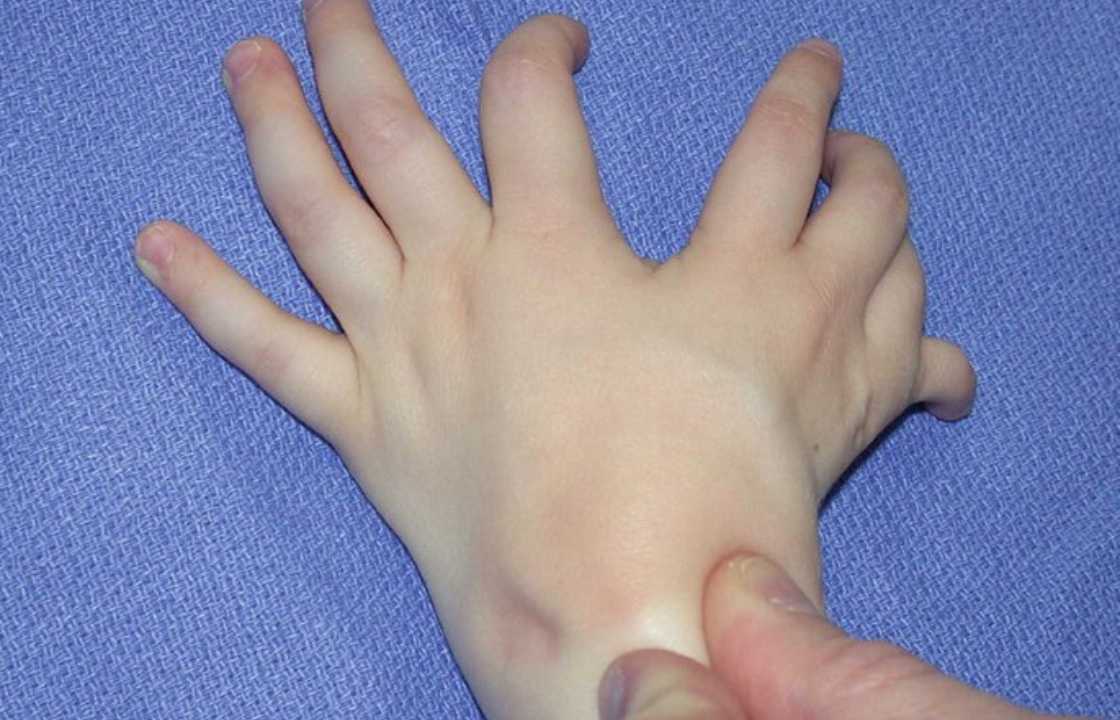Syndrome
What Is Mirror Hand Syndrome?
Mirror Hand Syndrome, also medically known as ulnar dimelia, is an exceedingly rare congenital birth defect that primarily affects the hand, and in some cases, extends its impact to the forearm and elbow. The condition, first documented in 1852, remains extremely uncommon, with fewer than 100 cases reported to date. This article delves into the causes, symptoms, and available treatments for Mirror Hand Syndrome, offering insight into this intriguing and rare medical anomaly.
Understanding Mirror Hand Syndrome
Mirror Hand Syndrome is a congenital condition, meaning it is present from birth. This disorder is characterized by the presence of 7 to 10 fingers on one or both hands. The defining feature of the condition is that the fingers, from the midpoint of the hand, exhibit mirror image duplication. In most cases, individuals with Mirror Hand Syndrome lack a thumb. Instead, they typically possess a central finger. Flanking this central finger are mirrored symmetrical arrangements of three fingers: the middle finger, the ring finger, and the little finger.
Remarkably, Mirror Hand Syndrome affects both men and women equally, with no significant gender bias.
The Underlying Causes of Mirror Hand Syndrome
The usual anatomy of the forearm consists of two bones: the ulna and the radius. These bones play distinct roles in hand and finger development and function. However, in the case of Mirror Hand Syndrome, there are typically two ulna bones, while the radius is notably absent. This atypical configuration often arises during embryonic limb development. It is not uncommon for wrist bones to duplicate in this process, further contributing to the mirror image appearance of the hand and forearm.
Medical experts recognize that there may be different variations of Mirror Hand Syndrome. In some instances, it is conceivable for individuals to develop two ulna bones alongside a radius bone. Such variations can lead to physical differences in the appearance of the hand, including the possibility of polydactyly, which refers to having more than five fingers. In rarer cases, individuals may develop multiple hands at the end of the forearm.
Although the exact cause of Mirror Hand Syndrome remains elusive, medical professionals believe that genetic factors play a significant role in its development.
Symptoms of Mirror Hand Syndrome
In addition to the striking physical appearance of multiple fingers and the absence of a thumb, individuals with Mirror Hand Syndrome may exhibit other symptoms. These may include a slight bending of the wrist and variations in elbow flexibility. While some individuals with Mirror Hand Syndrome may retain normal elbow bending and rotation capabilities, others may experience difficulties in fully bending or rotating the elbow joint.
One of the most prominent challenges associated with Mirror Hand Syndrome is the potential for a limited range of motion in the wrist and hand. This limitation can result in dexterity issues, making it difficult for affected individuals to perform everyday tasks that require hand and finger manipulation, such as grasping objects or picking things up.
Diagnosis of Mirror Hand Syndrome
The unique nature of Mirror Hand Syndrome, often stemming from limb development during embryogenesis, typically allows for diagnosis during prenatal ultrasound screenings performed during pregnancy. In some cases, the condition can also be identified at birth.
Treatment Options for Mirror Hand Syndrome
Individuals with Mirror Hand Syndrome usually require reconstruction surgery to address both the physical appearance and functional aspects of the affected hand. This may involve a series of surgeries to achieve the desired outcome.
Surgeons typically postpone these procedures until the child reaches an age of 18 to 24 months. Delaying the surgery until this stage allows the hand to grow significantly, nearly doubling in size from birth. During the surgical intervention, any surplus fingers are removed, and one of the existing digits is often selected to be repurposed as a thumb. This surgical technique is referred to as “pollicization.” The ultimate goal of the procedure is to reconstruct the hand with five functional digits, including the addition of a thumb.
In addition to reshaping the hand, the surgical team endeavors to preserve as much muscle, tendon, and growth plate as possible and reconstruct the wrist. These measures support the development of hand mobility, growth, and function as the child continues to grow and mature.
If Mirror Hand Syndrome has also affected the elbow joint or forearm, additional surgical procedures may be required to restore full range of motion.
Post-surgery, individuals with Mirror Hand Syndrome might benefit from motion exercises and physical therapy aimed at improving hand function as they grow. Consultation with a healthcare provider, physical therapist, or occupational therapist can provide guidance in this regard.
In conclusion, Mirror Hand Syndrome, also medically referred to as ulnar dimelia, stands as an exceedingly rare congenital condition characterized by a remarkable duplication of fingers while displaying a noticeable deficit in the thumb. Despite the rarity of this condition, extensive research suggests a likely genetic component contributing to its occurrence, though the exact etiology remains elusive.
Early diagnosis of Mirror Hand Syndrome is made possible through prenatal ultrasound screenings, which can provide valuable insights into the condition before birth, allowing for better preparation and planning. The management of this condition typically involves a multidisciplinary approach, with reconstructive surgery as a key element to enhance both the aesthetic appearance and functional capacity of the affected hand. Such surgical interventions aim to improve hand mobility and dexterity, offering affected individuals the opportunity to lead more fulfilling lives, despite the unique challenges posed by this rare condition. By ensuring timely and appropriate medical intervention, individuals with Mirror Hand Syndrome can attain not only physical improvements but also a greater sense of well-being and a brighter future.

